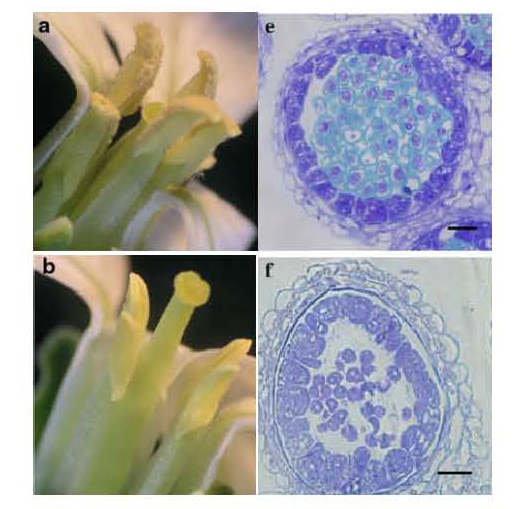
Male sterility, defined as the failure of a plant to produce functional pollen, has been reported in many higher plants involving at least 43 families, 162 genera, and 320 species. Utilization of this trait in breeding of numerous crops cam eliminate labor-intensive hand emasculation, and thereby provides an effective and economical means for a large scale hybrid seed production.
A new type of male sterility from radish has been identified by the research group lead by Professor WANG Ting at Wuhan Botanical Garden, Chinese Academy of Sciences, with the cooperation of Prof. XIANG Changping at Huazhong Agricultural University and Prof. MEI Shiyong at Hubei Academy of Agricultural Sciences. Linkage analysis placed the male sterile locus 10.7 cM away from the Rfo locus, and no maintainer has been identified for the male sterility so far by cross tests. Cytological observations showed that the abnormalities in male sterile anthers first appeared in tapetum at the tetrad stage, followed by a hypertrophy of the tapetal cells at the vacuolate microspore period. These results suggest that male sterility is likely to be genetic in nature, or it may represent a new type of the cytoplasmic male sterility.
This research has been published in Euphytica entitled “Genetic and cytological analysis of a new spontaneous male sterility in radish” (Raphanus sativus L.) (DOI 10.1007/s10681-011-0568-x).
Article link: http://www.springerlink.com/content/3m4303925615n500/

Histological analysis of male sterile and male fertile flowers of radish (Image by WANG Zhiwei)

86-10-68597521 (day)
86-10-68597289 (night)

86-10-68511095 (day)
86-10-68512458 (night)

cas_en@cas.cn

52 Sanlihe Rd., Xicheng District,
Beijing, China (100864)

